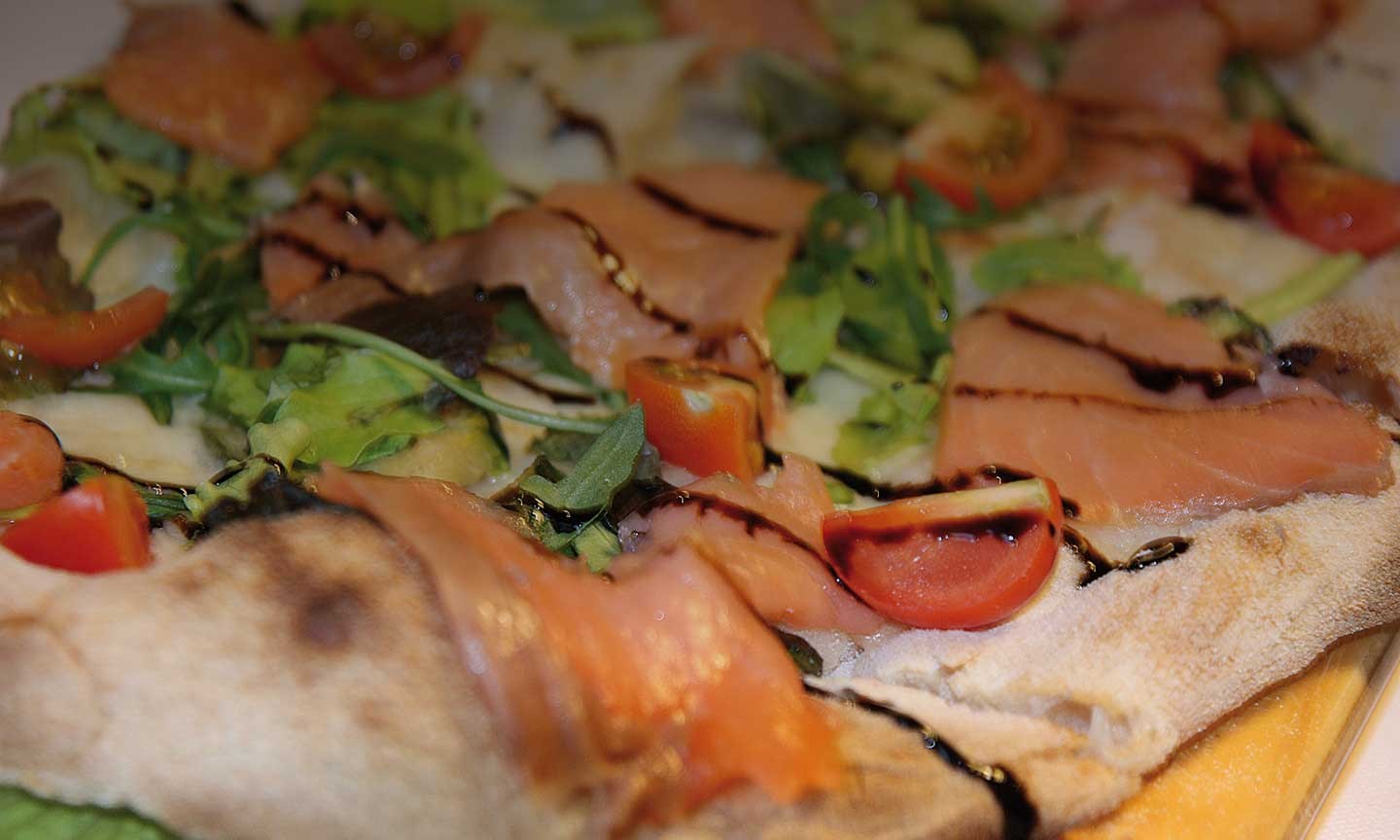La Pinsa Romana
What we call “Pinsa romana moderna” is a remake of an old recipe that dates back to the time of ‘Ancient Rome, reworked thanks to ingredients and modern techniques. The original recipe comes from the rural population outside the walls. Thanks to the grinding of cereals (millet, barley and spelled) and with the addition of salt and herbs, they cooked these flat breads or buns. The term “pinsa” comes from the Latin “pinsere” which means to stretch-crush.
The main features of the Pinsa Romana are:
Shape (oval, rectangular and not circular)
Fragrance (crispy edges and soft inside)
Digestibility (Thanks to various techniques leavening-ripening)
Flour (Coming from a secret recipe)
The flour of Pinsa Romana® consists of:
Wheat: Old corn
Soy: helps dough fixing and gives friability
Rice: in cooking, it holds water and gives lightness
Dried sourdough: gives high digestibility to the product, contributing to the rising process
Most important is the maturation, a process that takes place from 3.5 hours with weaker flours up to 48 hours with the strongest.
Particular attention should be paid to the yeast, as the portions used are minimal: the rising process is very slow, starts from 24 to up to 150 hours for technically workable product, all strictly in the fridge.
The flour is mixed with cold water and the amount of water in relation to the flour (hydration) comes to 80%, while in the pizza we roam around the 50% -60%. This particular difference does greater fragrance, further, as we use less flour in the dough, we reduce considerably the amount of carbohydrates, calories and fat in the final product, making the product highly digestible. We are talking about a strong flour and with a high degree of absorption that allows the realization of soft dough and very hydrated.



